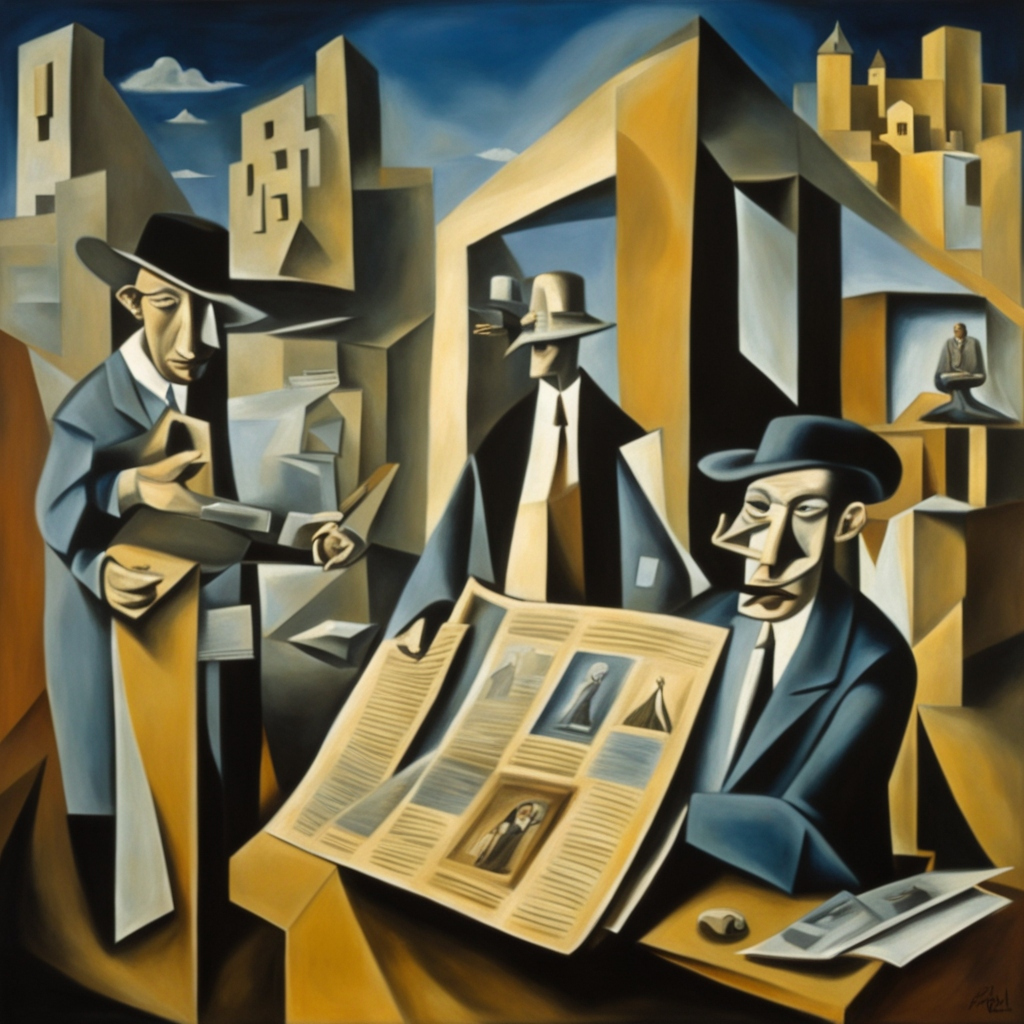Seventh in the News Commons series.

How does the news business see itself?
Easy: ask an AI. Or a lot of them.*
That’s what I’ve been doing. Unless otherwise noted, all the following respond to the same three-word prompt: the news business. Here goes…
Microsoft Bing (Full name: Microsoft Bing Image Creator from Designer), which uses DALL-E 3:

Dream Studio by Stability.ai (which, as you see, required a longer prompt than I used with the others):



Craiyon, again with a longer prompt:

Stable Diffusion:

Finally, a series from DeepAI., each generated in a different style.
First, impressionism:

Surreal graphics:

Renaissance painting:

Abstract painting:

AI art:

What do these say about the news business? Well,
- It’s mostly male.
- It’s mostly about newspapers, somewhat about TV, and idealized both.
- It used to be big.
- It doesn’t know what to make of the Internet.
- It’s obsolete in the extreme.
For most of the prior century, the news business was big. In tech parlance, it scaled. Here in the U.S. and Canada, every town had a newspaper, and in some cases several. Many towns—and all cities—had radio stations. Every name-brand city had a TV station, or two, or more. The great newsweeklies, Time and Newsweek, had millions of subscribers and made lots of money. So did TV network news operations. Newsstands were everywhere.
All of that has collapsed. Some print and broadcast news operations still exist, but most are shells of their former selves, and many put news icing on a cake of partisan talk shows. Exceptions to collapse are the surviving news giants (New York Times, Washington Post, Wall Street Journal), and resourceful public broadcasters. (Pew Research shows NPR’s audience has long topped 20 million people, though it is slowly declining.)
People today get most of their news through phones, tablets, and laptops. These are packed with apps that maximize optionality. People now hardly listen, watch, or read on schedules set by publishers, stations, or networks. Everyone with a smartphone had a limitless variety of news sources. Or sources within sources such as Instagram, TikTok, YouTube, and old-fashioned social media such as Facebook and X.
According to Pew, the top news sources for young people today are TikTok and social media. In other words, from each other. The threshold of news creation and production is also low. This is why, according to Exploding Topics, there are now over three million podcasts worldwide.
As Scott Galloway put it in a recent Pivot podcast (which I can’t find right now), news is a shitty business—at least if you want to scale up something huge. It’s not even a great small business. But hell, neither is running a restaurant, a nail salon, a clothing shop, or a small farm. But those are real businesses.
As Jeff Jarvis makes clear in The Gutenberg Parenthesis: The Age of Print and Its Lessons for the Age of the Internet (which I highly recommend), we are at the end of one long era and the start of another one.
In these early years of The Internet Age, the most substantive news and news businesses are the local kind. True, not everybody cares about local news. But everybody lives somewhere, and it does matter what goes on where people live. Belonging somewhere in the virtual world is optional, but it is mandatory in the physical one. And, as with running a restaurant, a store, or a farm, reporting local news is a labor of talent and love. It’s what we still call “a living.”
Right now there are three models for the local news business: advertising, subscription, and philanthropy. In my next post, the eighth in this series, I’ll lay out the case for a fourth one.
*I didn’t try Midjourney, DALL-E 3, or Stable Diffusion because they all require subscriptions, and I don’t feel like paying for those yet. DALL-E 2 yielded blah results.
Leave a Reply